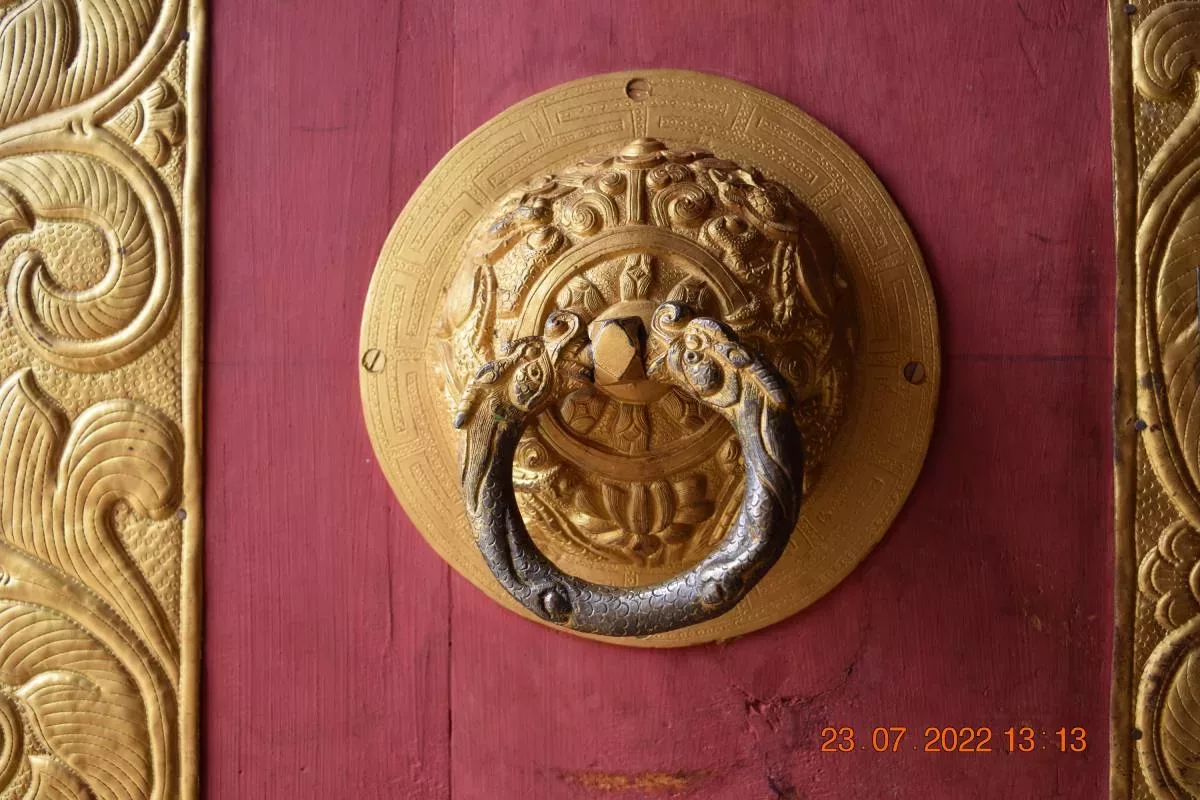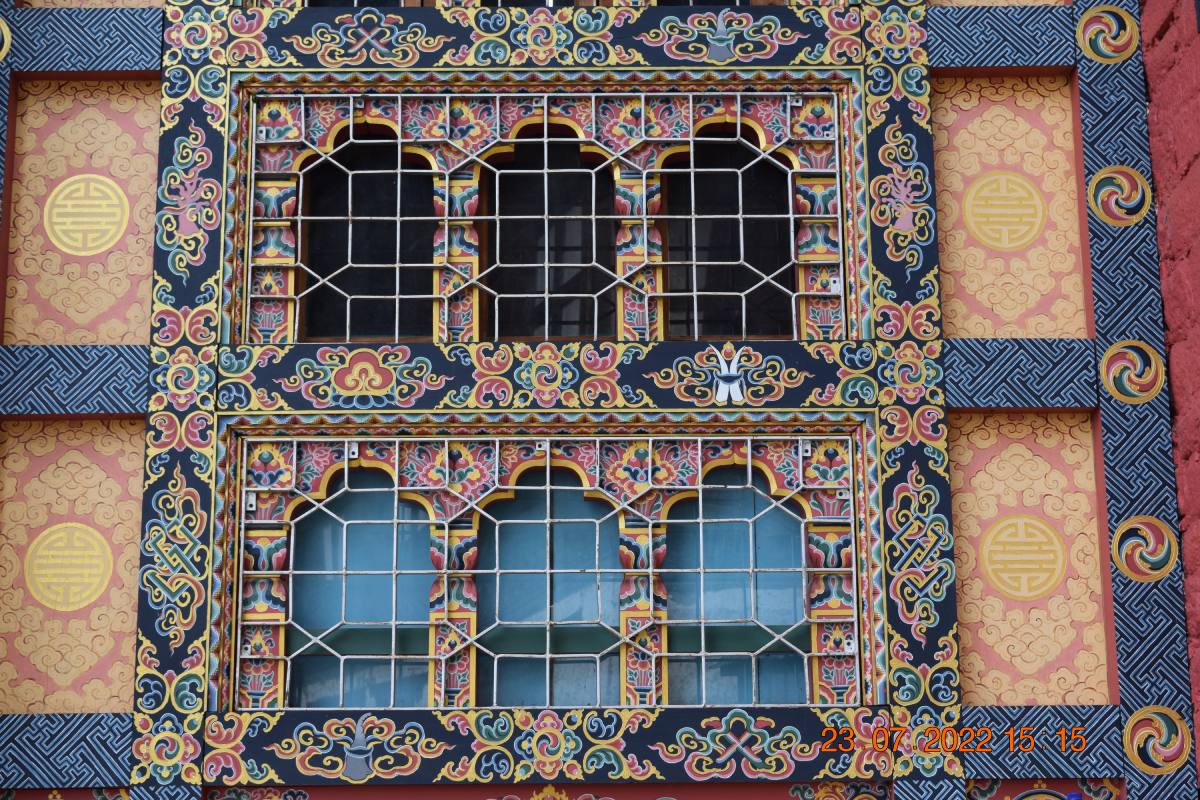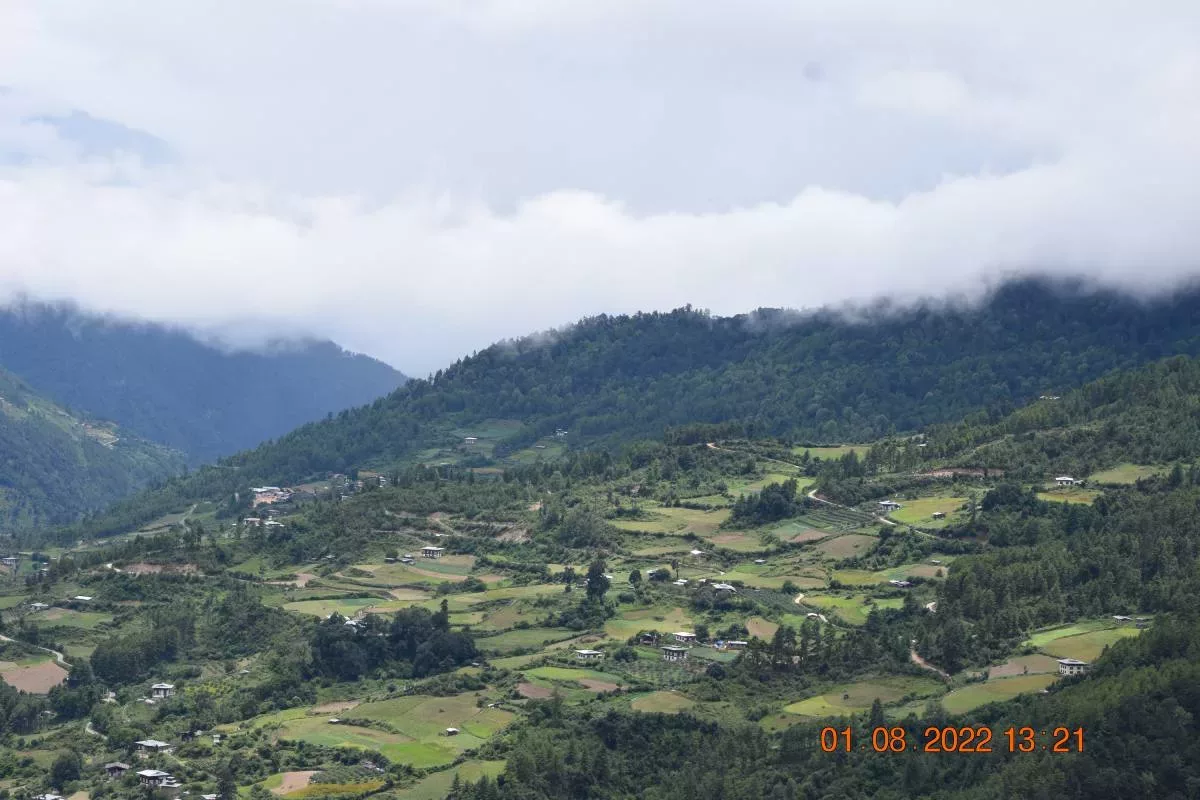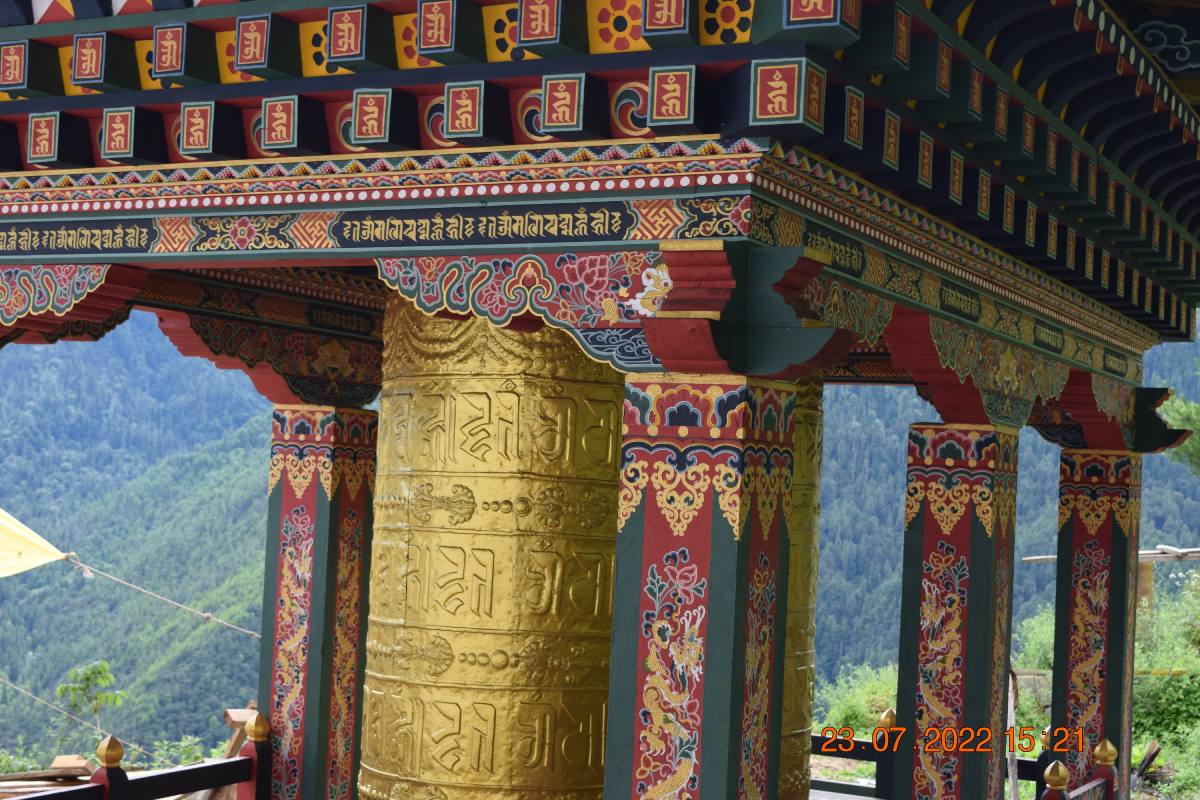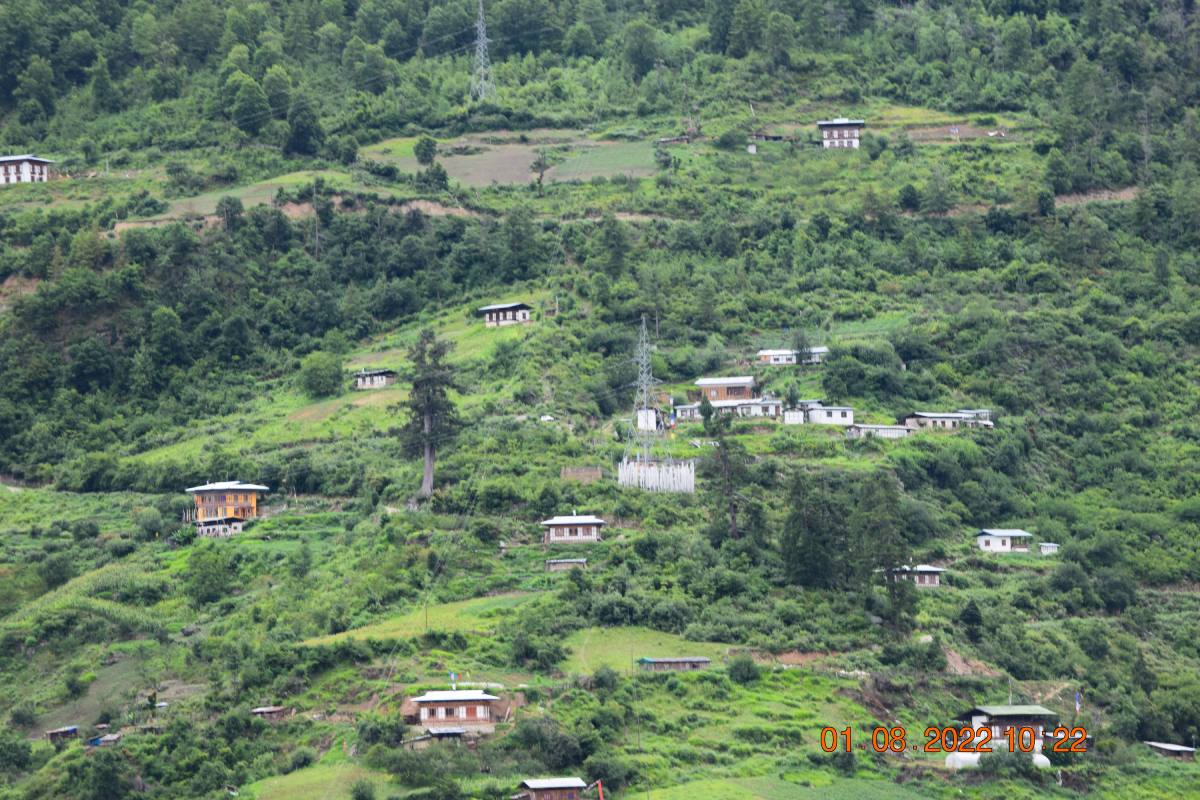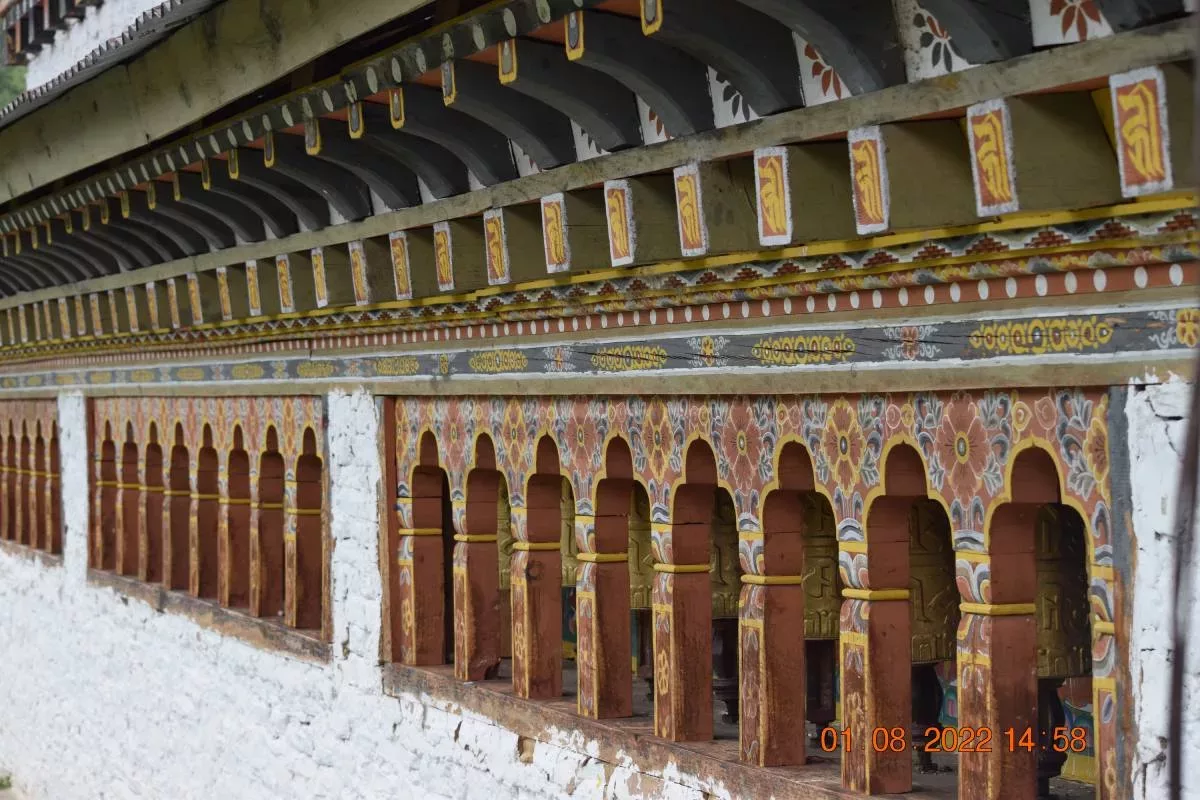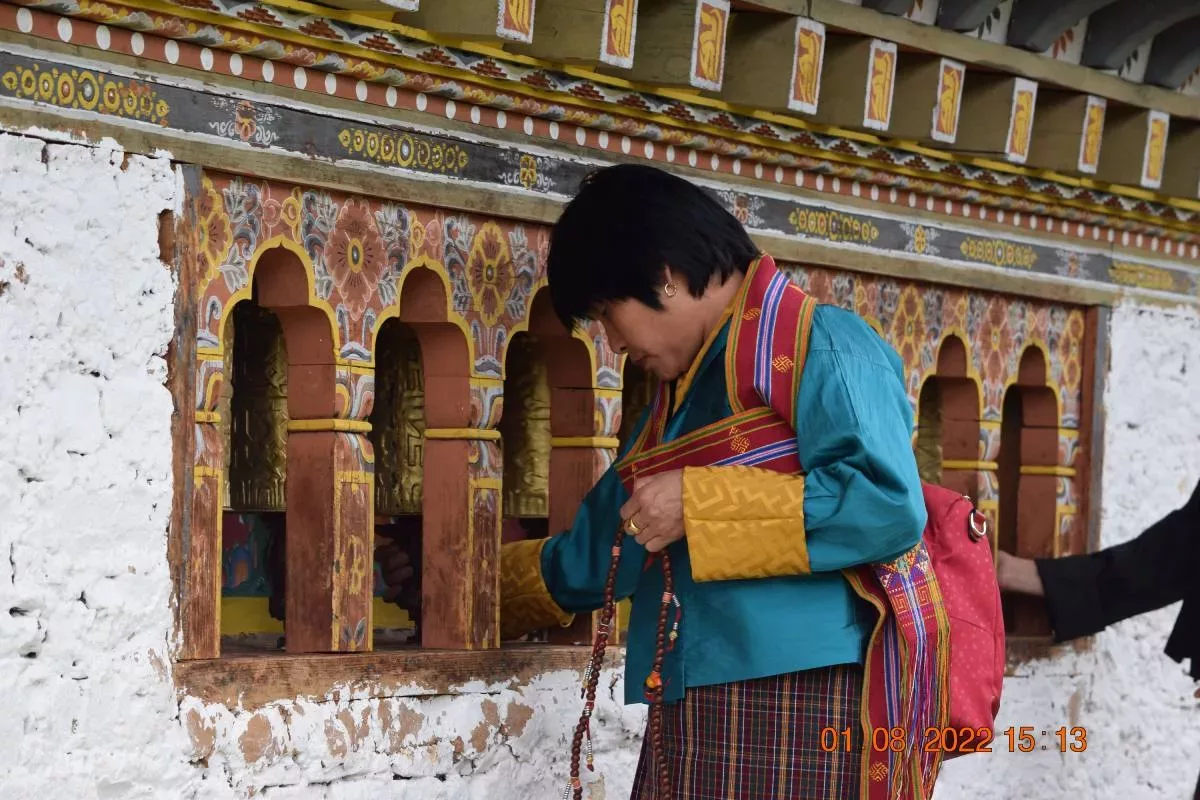Detailed Program
While flying towards Paro, you can catch a spectacular view of the majestic mountains lining the passage, including the antediluvian Jumolhari & Jichu Drake peaks. On arrival at Paro International Airport, your Bhutanese friend from Truly Bhutan will receive you. Discuss the Tour Programme with the Host.
Afternoon sightseeing and photography session.
Places and attractions:
- Rinpung Dzong
- Drukgyel Dzong
- Taktshang
- Kyichu Lhakhang
- Kila Gompa
- Dungtse Lhakhang
- Tachog Lhakhang
- Dzongdrakha
Accommodation options:
Post breakfast, a visit will be arranged for Drukgyel Dzong (a ruined fortress), 16 kilometers away from Paro town. Although it has been in ruin this Dzong has great historical importance for the people of Bhutan. It was a place where the Bhutanese finally defeated the Tibetan invasion and drove them back. On a clear day, one can view the sacred Mt. Jhomolhari (Mountain of Goddess). Its altitude is 7,329m. Visit Kyichu Lhakhang (Lhakhang means temple).
Which was built in 659 AD by the King Songtsen Gompo of Tibet as one of the 108 such monasteries he built in various places to spread Buddhism. It is located between Paro Town and Drukgyel Dzong. It is one of the holiest places in the country, as it marks the advent of Buddhism in the country.
After Lunch, the National Museum beckons, which used to be a watchtower for Paro Rimpung Dzong (Fortress). It was converted into Museum in 1968. Visit Paro Rimpung Dzong, the Dzong was built in 1646 AD, and walk down to town one the way you can see the traditional wood bridge of ancient style.
Places and attractions:
- Rinpung Dzong
- Drukgyel Dzong
- Taktshang
- Kyichu Lhakhang
- Kila Gompa
- Dungtse Lhakhang
- Tachog Lhakhang
- Dzongdrakha
Accommodation options:
The name Taktsang means “Tiger’s Nest “ One of the most revered shrines of Bhutan, this monastery hangs on the side of a cliff dropping 900m towards the Paro valley below. It is said that Guru Rinpoche arrived here sitting astride a flying tigress and meditated in a remote cave, hence the place came to be known as ‘Tiger’s Nest’. This site has been recognized as one of the most spiritual sites in the country. A sacred place, where many eminent saints did meditation. Picnic lunch at the Taktsang cafeteria.
The round hike takes about four hours.
Places and attractions:
- Rinpung Dzong
- Drukgyel Dzong
- Taktshang
- Kyichu Lhakhang
- Kila Gompa
- Dungtse Lhakhang
- Tachog Lhakhang
- Dzongdrakha
Accommodation options:
Get up early to drive to Haa via Chele la pass Located 45 Km away from Bondey village, the road towards Haa turns towards the right and climbs up towards the Chele la pass. Drive through lush pine & rhododendron forests for about 45 km to reach Chele-la pass (3822 meters above sea level) A picnic lunch at Chelela pass. On the way back walk to Chelela Nunnery.
Places and attractions:
Accommodation options:
While going to Thimphu, visit Simtokha Dzong en route. One of the oldest fortresses in Bhutan, it was built in 1629 AD. It houses the largest monastic schools in the country. Visit Tashichho Dzong, the main secretariat building. This massive structure houses part of the government Ministries, the office of the King, and the Throne Room. It also houses the Central Monastic Body and the living quarters of Chief Abbot and the senior monks.
In the afternoon, pay a visit to the Memorial Chorten (a mammoth stupa) built in memory of the Third King of Bhutan who reined the Kingdom from 1952-1972. Visit the mini Zoo where the national animals were kept and drive to Sangaygang where you can have a spectacular view of Thimphu valley. Visit nunnery in Zulikha. Visit the Wood Craft and Painting school where traditional arts and crafts are still kept alive through the instructions of painting and curving. Later, some shops at the Handicrafts Emporium where Bhutanese textiles and other arts & crafts are displayed and can be purchased.
Places and attractions:
- Tashichho Dzong
- Semthoka Dzong
- Dochu La Pass
- Memorial Chorten
- Changangkha Lhakhang
- Zangdopelri
- The Tallest Buddha Image
- Tango And Cheri Monasteries
- The Handicrafts Emporium
- Traditional Medicine
- Zorig Chusum Institute
- National Library
- Weekend Market
- Botanical Garden
- Thadrak Goemba
- Tashigang Goemba
- Chizhing Samtencholing Lhakhang
Accommodation options:
In the morning, enjoy the long drive to Gangtey valley, which takes around 6 hours. It is a beautiful valley situated at an altitude of 3000m, this valley was open its route very recently. The journey takes about 6 hours through Dochula Pass (3150m). On the way stop for a photo stop at Dochula Pass which is 26km away from Thimphu valley, and for Tea and snacks and to enjoy the most spectacular view of eastern Himalayan snow capped Mountains and also the spectacular view of Gasa Dzong at a distance (If the weather remains clear) and descends to subtropical area Wangdue Phodrang. During winter one can see the endangered species of bird (Black Naked Crane).
Have lunch in Punakha or Wangdue.
Places and attractions:
- Dargay Goemba
- Gangtey Gompa
- Temple Of Sha Radap
- Gaselo & Nahee Village
- Adha And Rukha Village
- Shaa Region Of Wangdiphodrang
- Bhey Langdrag Nye
Accommodation options:
In the morning, drive to Bumthang via Trongsa and a stop-over at Chendbji Chorten, which is patterned on the lines of the Swayambunath temple in Nepal. Built in the 18th century by Lama Shida, it covers the remains of an evil spirit that was taken down at this place. After, visit the Trongsa Dzong, the most emphatic dzong in Bhutan, built by Chogyal Minjur Tempa, the emissary sent by Zhabdrung to appease eastern Bhutan.
Desi Tenzin Rabgay added to the dzong at the end of the 17th century. This dzong is the ancestral home of the present Royal Family; the initial two kings ruled Bhutan from this Dzong. Drive to Bumthang via Yongtala & Kilakha passes. Bumthang sightseeing includes Bhutanese the Carpet Factory, where they use Yak and Sheep wool and even pure silk to create carpets and ethnic Bhutanese Textiles. Post lunch, visit the Jakar Dzong, literally meaning ‘The Castle of White Bird’. Its current structure was built in 1667.
Later visit Lamey Goemba, a majestic palace, and monastery built in the 18th century by Dasho Phuntsho Wangdi, the great warrior. Further, you can see the Jambay Lhakhang, built by King Songtsen Gampo of Tibet in AD659. Guru Rimpoche blessed this temple during his visit to Bumthang. Sindhu Raja renovated it after Guru Rimpoche restored his life with his powers. Legend has it that under the temple is a lake in which Guru Rimpoche took refuge on several occasions.
In October, the colorful festival, ‘Jambay Lhakhang Drup’ unfolds at this very temple. As the evening sets, you can check out the handicrafts and all. Have your dinner downtown at Bumthang.
Places and attractions:
Accommodation options:
After breakfast, visit Chakhar Lhakhang (the iron castle), it is the site of the palace of the Indian King, the Sindhu Raja who invited Guru Rimpoche to Bumthang. The Original palace was made of Iron and hence the name Chakhar. The saint Dorji Lingpa built the Current building in the 14th century. Its correct name is Dechen Phodrang.
We then visit Kurjey Lhakhang which is named after the body print of Guru Rimpoche, built in 1652 by Minjur Tempa. Visit Tamshing Lhakhang (Temple of the good message), established in 1501 by Pema Lingpa and is the most important Nyingmapa temple in the kingdom. In the evening, visit Membartsho which means, “The burning Lake”.
Dinner and Overnight in Hotel at Bumthang.
Places and attractions:
Accommodation options:
It’s going to be a long day drive today and so you will need to get an early start. Along the way, enjoy the scenery, the beauty of snowcapped mountains, flowers, grazing yaks, and the dense forest. We will stop in Ura valley where we visit the village and its temple. Ura Village has a medieval look with compact houses lined up alongside the cobblestone streets and is known for the women’s typical sheepskin shawls.
As we leave the URA Village behind, the climbs to the Thrumshingla pass (3,750m/12,300 ft.) that officially divides central Bhutan from Eastern Bhutan. The road now gradually descends to Sengor and we will see some cascading waterfalls along the way. Once we cross the bridge over the Kurichu, You will set out on the mountainous road alongside cliffs, above the river valley to Lhuentse which is the original home of Bhutan’s royal family in the remote and ancient region of Kurtoe.
You stop briefly to visit the Lhuentse Dzong, built in the 1600s, and then continue further on to the Khuri bazam Village from where it takes 10-15 mins to drive to Minjey Village. Almost all 30 houses in the village have blackstrap looms for “Kishuthara” or brocaded dress.
Four supplementary wefts are interworked around the warp elements so that they appear to ride the surface of the cloth-like embroidery to create motifs & Later in the evening you can spend your time culture exchange with locals were they will welcome you with Locally brewed alcohol called “Ara”.
Overnight at Minjey village in Farm House.
Places and attractions:
- Dungkar Naktshang
- Kishuthara
- Varied Flora And Fauna
- Jangchubling
- Khiney Lhakhang
- Wangzhing Lhakhang
- Shazo In Minjey
- Singye Dzong
Accommodation options:
Kishuthara weaving: is the main source of income for the people in this place. Kishuthara is a fabric made of silk on silk weaving with intricate hand-laced patterns. It is a highly regarded and most expensive hand-woven Bhutanese textile in Bhutan. Today is a special day for textile lovers because you see this famous textile in its originating place.
You view the weaving technique as well as have the opportunity to interact with the different weavers in the village to better understand and study their weaving techniques, process, and tools. You can try weaving with the weavers.
Later drive to Lhuentse, which is one of the most rural and isolated districts in Bhutan. The landscape is spectacular with stark cliffs and gorges, beautiful conifer and pine forests, and remote villages with rice, millet, and cornfields. Kurtoe region of Lhuentse is the ancestral home of Bhutan’s royal family & then drive to Menji village to see the distinct textile weaving and hike to the statue of Padmasambhava 148 feet 30-foot high lion throne and 17-foot high lotus seat in the form of Guru Nangsi Zilnoen is being built in Takela, Lhuentse to bring peace and harmony to the world as prophesied by Lord Buddha. This will be the world’s largest statue of Guru Padmasambhava.
Evening village visits.
Overnight in Farmhouse
Places and attractions:
Accommodation options:
Since time immemorial Bhutanese have been passionate about their national sport of Dha (archery).
Nearly all villages in the kingdom boast an archery range and each dzong has a space set aside nearby for a BHA Cho (field of target). Competitions are a riot of colors and excitement, with two teams in traditional dress shooting at small wooden targets placed 140m apart (The Olympic standard is 50m).
The distance is so great that team members gather dangerously close to the target to yell back how good the archer’s aim was. Howls, chanting, encouragement, and jokes often accompany this. Members of the opposing team may shout back how terrible the archer’s aim is and make ribald remarks. When an arrow hits the target, teammates perform a celebratory slow-motion dance and sing the praises of the shooter, who tucks a colored scarf into his belt. For major tournaments, each team brings its cheerleading section of girls decked out in their finest clothes.
They perform dances in between play, and during the shooting; they do brief routines and shout lewd and disparaging comments about the opposing archer’s parentage or sexual prowess. Tradition has it that women are not allowed to touch an archer’s bow, and it is believed to decrease performance if an archer sleeps with a woman the night before a contest. The traditional Bhutanese archery equipment is a long bamboo bow.
Most archers nowadays use a state of -the -art carbonate Hoyt brand bow with a complicated-looking pulley system that releases the arrows with tremendous speed. The use of imported equipment hasn’t diluted the rich traditions of the game, although Bhutanese archers are now encouraged to train for the Olympics.
International coaches who have trained Bhutan’s Olympic archers have been impressed with the natural talent and think that, with expert coaching, Bhutan could win an Olympic medal one day. Archery matches are among the most picturesque and colorful events you’ll find here and are well worth a visit.
Places and attractions:
Accommodation options:
Finish your breakfast and head towards Mongar and Trashigang. En route, you have to drive down to the lowlands of the Drametse and Ozorong regions, which are subtropical areas like Lingmethang.
Drive further across Chazam (Iron Bridge) towards Trashigang Market, a small, heavily populated area, that was considered the largest city in eastern Bhutan till Kurichu Project in Mongar dominated the area. Trashigang Dzongkhag has the largest number of inhabitants in the whole of Bhutan.
Retire for the night at the hotel in Trashigang.
Places and attractions:
Take the day’s excursion to Trashiyangtse and en route, visit the famous Gomkora Lhakhang. This Gomkora Lhakhang was visited by the great saint Guru Rimpoche who subdued evil spirits.
You will find a small meditating cave of Guru Rimpoche. Drive further to Trashiyangtse and visit Chorten kora. This place host two religious festivals and people from Arunachal Pradesh in north-east India also come for the festival. The Chorten is surrounded by many minuscule prayer wheels.
Places and attractions:
- Trashigang Dzong
- Chador Lhakhang
- Rangjung Monastery
- Trashigang Radhi
- Merak & Sakteng
- Muenselling Institute
- Khaling National Handloom
Accommodation options:
An early morning drive brings you to Bhutan Samdrup Jongkhar. On the way stop for clicking pictures.
Places and attractions:
Say goodbye to your Bhutanese friends. Head to the airport.
- Inclusion
- Exclusion
- Insurance
- Airport pick-up and drop-off by private vehicle.
- 3-star accommodation (4 & 5 stars may require an additional premium update).
- Bhutan visa fee – including all necessary processing
- Route Permit
- Three meals per day during your stay in Bhutan
- A licensed Bhutanese tour guide
- All land transportation by private vehicle
- Camping equipment and haulage for trekking tours
- Sightseeing as per itinerary
- Monuments entrance fees where applicable
- Drinking water
- All internal taxes and charges
- A sustainable development fee of $200. (This sustainable development fee goes towards free education, free healthcare, and poverty alleviation, along with the building of infrastructure.)
- Airfare & Travel Insurance
- Expenses of personal nature, Tips to guides and drivers
- Expenses occurred due to unavoidable events i.e. road wrecks, flight delays etc.
Package does not include insurance of any kinds, and that you are required to obtain separate coverage from your home country before your trip begins.

